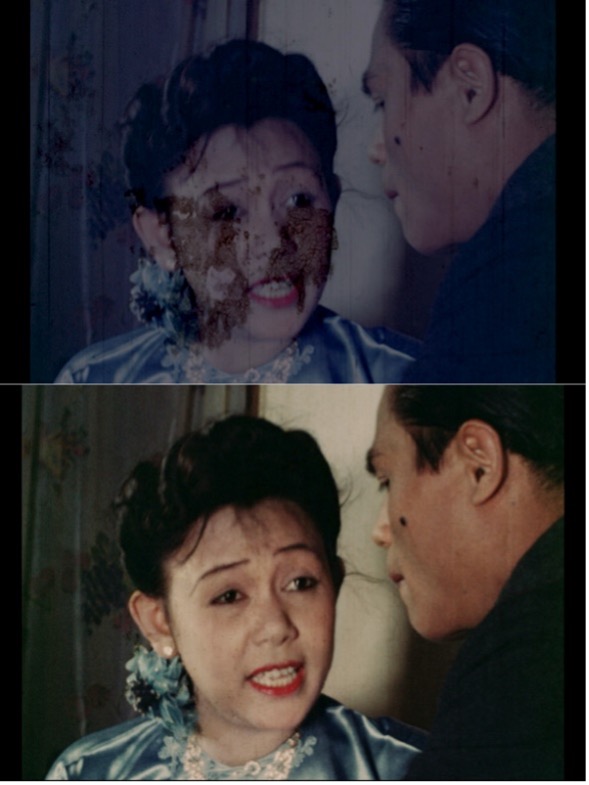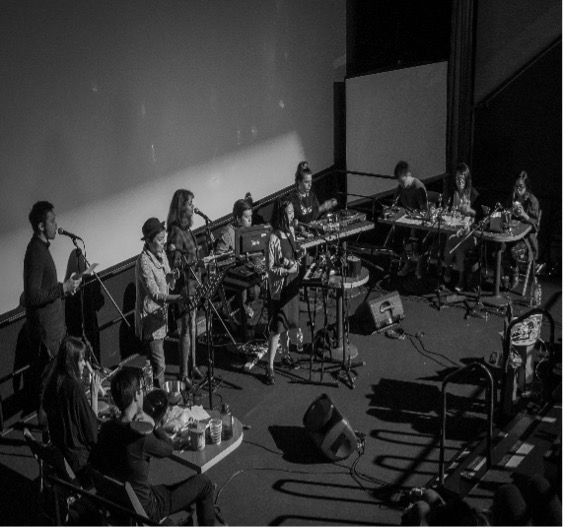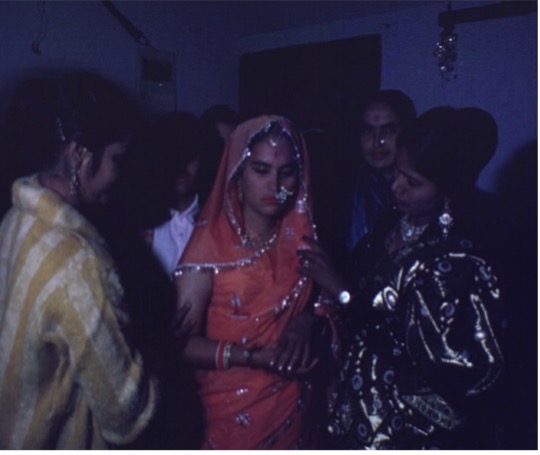Asia-Europe Cultural Festival: Interview with the Asian Film Archive

As part of the Asia-Europe Cultural Festival 2024 Closing Curtain in Singapore, ASEF culture360 speaks with Karen Chan, Executive Director of the Asian Film Archive, to share about the Archive's journey, the significance of film restoration and preservation and about Pyo Chit Lin (My Darling).
Pyo Chit Lin (My Darling) was restored by the Asian Film Archive, in collaboration with Memory! Cinema Association and will be showcased with live music composed by artist Kent Lee (Malaysia) using various mediums of music on 27 September 2024.
1. Tell us about the Asian Film Archive (AFA) and its journey since 2005. How do you see the role of the Archive evolving within the context of Singapore and the wider Asia film sector?
Karen Chan: The AFA was established with the mission to preserve the rich film heritage of Singapore and Asian cinema, to provide and facilitate access, research, publish and discover Asian films, and to create platforms where new generations of researchers and audience can appreciate and be inspired by. We look out for Asian cinematic gems and prioritise films that are not already preserved in either their home country or by any other archive to fill the gaps and give access to possibly lesser known but equally significant (in the various spectrum of concerns socially, politically, culturally etc) films. AFA has acquired Asian films left behind by laboratories and cinemas that have closed, identified films that other Asian archives may be looking for and facilitated the journey home for these films.

1. Asian Film Archive office at the National Library Building © Asian Film Archive
The Archive must research and keep abreast with the developments and technologies of the film industry so that we can react appropriately, a role that is particularly vital in this digital era. Importantly, we are working towards creating a repository of Asian films that future generations can access and support researchers and filmmakers in their work. In an industry that sees so much content being produced, archives must join forces rather than work in silos. AFA collaborates with other archival institutions that care for Asian films to take in materials so that we can make the best use of the resources available.
2. A large focus of AFA’s work is on the preservation of film heritage of Singapore and Asian cinema. Is there a difference between preservation and restoration in the film context, are the terms synonymous?
Karen: Preservation is at the heart of film archiving. Without preservation, there would be no film elements to work with, whether it be to restore or digitise a film from. If a film is well preserved, there will be more materials to enable a successful restoration when the need arises. Preservation is an on-going process that requires continual monitoring, maintenance and support. It is not a passive act but requires the active participation of all stakeholders – filmmakers, producers, distributors, audiences, government agencies and the private sector. Check out the stories of filmmakers in AFA’s #Save Our Film campaign.

2. Inspecting the condition of a film reel © Asian Film Archive
It is often assumed that with technology, any film can be restored. This could not be further from the truth. Often, by the time the film elements arrive at AFA, they are so deteriorated that the images have totally disappeared. Sometimes, the films are hard as rock or liquified. Once they get to this stage, there is nothing the best technological equipment or expertise can do to bring back the film. It breaks our hearts when we have to dispose the film that has become non-salvageable.

3. Before and after the restoration of Pyo Chit Lin © Asian Film Archive
For AFA, restoration is a means to the larger end of preservation, where restoration enables a film to be accessed, appreciated and creates greater understanding on why preservation is important and urgent. This is particularly relevant for preserving born-digital and digitised formats that come with their unique set of challenges. The digital format does not ensure that films will last forever, nor does it make preservation easier or cheaper. Since no one knows what the digital era will bring, digital files and data are often lost due to negligence or ignorance. Digital preservation is also much more expensive as files/data must be constantly migrated to contemporary formats to prevent obsolescence and loss, and storage must be continually expanded to hold the growing amount of data.
3. One of the films restored by AFA in 2017, Pyo Chit Lin (My Darling), will be screened in the framework of Asia-Europe Cultural Festival 2024 – Closing Curtain on 27 September. Could you tell us more about how the film was selected for restoration and what the process to repairing it looked like?
Karen: MEMORY Cinema Association approached AFA to work with them on a restoration project of Pyo Chit Lin (U Tin Myint, 1950). The plan was to have the restored film open the MEMORY International Film Heritage Festival in Nov 2017.
Myanmar had a prolific and vibrant film industries in Southeast Asia dating back to the early 1920s. It was a film-oriented culture that supported over 300 cinemas throughout the country, of which a mere fraction has survived today. Only 12 titles are known to be left with the Myanmar State Archives and many are in poor condition. Given the scarcity of surviving film elements of any films, MEMORY’s contact with Myanmar director U Kyi Soe Tun who had a copy of the print, was an opportunity that could not be missed. This is an illustration of institutions working together to further a higher common goal - such a restoration would allow us to preserve Myanmar’s cinematic heritage.
The restoration was made possible using the sole surviving 16mm positive print. The print displayed decay, green mould, continuous scratches, colour bleeding and staining. Extra care was taken during the colour grading process to respect the original luminosity and contrast of the film, with attention given to manage the density of the blacks. The film elements have been scanned in 4K resolution and digitally restored in 2K.

4. Examples of the physical and chemical conditions of the positive 16mm print when scanned at L’Immagine Ritrovata laboratory in Italy © Asian Film Archive
4. After Pyo Chit Lin (My Darling) was restored, the film premiered at the 2017 Memory! Film Festival in Myanmar, alongside live musical accompaniment. The film was subsequently screened at the Oldham Theatre, Singapore in 2019 and 2023 with a pre-recorded soundtrack to accompany the film. What was the reaction of the audiences to this Myanmar classic film?
Karen: Hundreds of people turned up in great anticipation to watch the film in Myanmar, packing the large cinema where the screening was accompanied by local musicians playing traditional Burmese music. Local and international celebrities like Catherine Deneuve, filmmakers Tsai Ming-liang, Midi Z, Lee Kang-sheng were in attendance. AFA’s Senior Archivist, Chew Tee Pao, represented AFA at the festival.

5. Local and international film personalities at the 2017 Memory! Film Festival in Myanmar © Asian Film Archive
AFA screened the film during its Asian Restored Classics and RECIPROCAL programmes. On both occasions, outreach efforts to the Myanmar population living and working in Singapore brought audiences who came to see the rare film. There was a recognition that this is one of the few chances to experience the cinema of Myanmar, knowing that so few cinematic titles are left.
5. When we think about film restoration and older films, it is still a relatively niche area and can sometimes be unappealing to today’s audiences. For the upcoming screening, Pyo Chit Lin (My Darling) will be accompanied by a newly composed music performed live by Malaysian artist, Kent Lee. Do you think the combination of live music and cinema can help in making these restored films more popular, such that they can not only be screened but also promote a wider appreciation of such works?
Karen: There is always a fascination with silent films (due to their age linage) when accompanied by live music performances. Bringing film and music together, two highly accessible art forms that transcend socio-political and economic barriers, naturally attract more diversely varied demographic audiences. Furthermore, such silent film screenings and music performances allow for the (re)imaginations of presentations, creating new artistic creations and interpretations amongst contemporary audiences.
 |  |
6. Examples of live performances accompanying silent film screenings organised by AFA. (Above L-R) Pan Si Dong (盘丝洞, The Cave of the Silken Web, Dan Duyu, 1927) screening in 2017; Dragnet Girl(Kinuyo Tanaka, 1933) screening in 2022. © Asian Film Archive | |
An example of such a new presentation was AFA’s screenings of North Indian Wedding (Rajendra Gour, 1966) in 2023. AFA had digitised and restored what had been captured as footage that the filmmaker hoped to turn into a film. This did not come to pass but AFA’s screening became the first time that the filmmaker and his family were seeing his late sister’s wedding and projected with live music. It was a poignantly moving moment for the family, and that translated emotionally for the audience as well.

7. North Indian Wedding (Rajendra Gour, 1966) screening in 2023 © Asian Film Archive
6. Could you describe Pyo Chit Lin (My Darling) in a short phrase? What about the film has left an impression on you?
Karen: Pyo Chit Lin is one of the few Myanmar classics still in existence and is the country’s earliest surviving colour film, starring major Burmese actors of the time. This romantic comedy is a precious document of Myanmar’s once prolific and vibrant movie industry.
I was struck to see in this 1950 film, an independent female protagonist, who was depicted as financially strong due to her own entrepreneurial efforts. She could take care of herself and had choices about how she wanted to live her life. The colour production of the film is delicate, capturing the romanticism of the film industry and its role within the country.
I was struck to see in this 1950 film, an independent female protagonist, who was depicted as financially strong due to her own entrepreneurial efforts. She could take care of herself and had choices about how she wanted to live her life. The colour production of the film is delicate, capturing the romanticism of the film industry and its role within the country.
The screening of Pyo Chit Lin on 27 Sep 2024 as the closing curtain of the Asia-Europe Cultural Festival is an opportunity that audiences should grab onto. This two-in-one cultural event allows you to not only see an Asian restored cinematic gem, but also be able to enjoy the performance of a talented contemporary Asian artist who was inspired by the film. It is truly an occasion not to be missed.
Cover Image: Before and after the restoration of Pyo Chit Lin © Asian Film Archive
The Asia-Europe Cultural Festival's Closing Curtain will take place from 27 to 29 September 2024 in Singapore, opening with the screening of Pyo Chit Lin (My Darling). Contemporary dance, music, film and a multidisciplinary exhibition will also be showcased over 28 and 29 September.
Click here to book your tickets for the screening.
Karen Chan joined the Asian Film Archive (AFA) in 2006, becoming its Executive Director in 2014. Under her leadership, the AFA has created new life and access for film collections. From commissions to collaborations, the AFA is an innovative platform for interdisciplinary dialogue, learning and discovery.
Karen teaches about film literacy and preservation, writing about AV archiving to highlight the value of film as heritage. She is serving a second term as President of Southeast Asia-Pacific Audiovisual Archive Association (SEAPAVAA) and is the current Chair of the Co-ordinating Council of Audiovisual Archives Associations (CCAAA).
